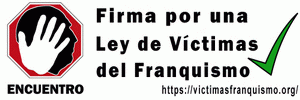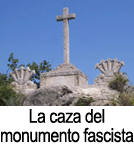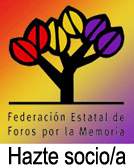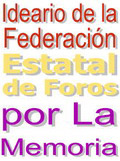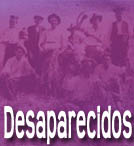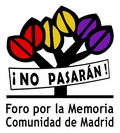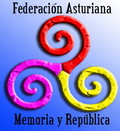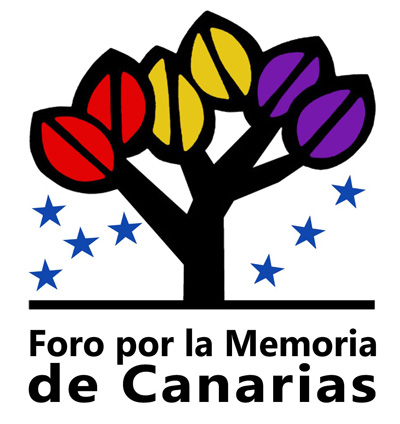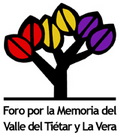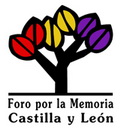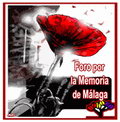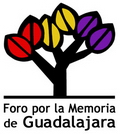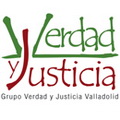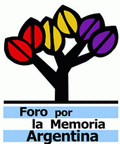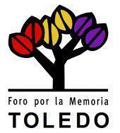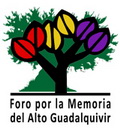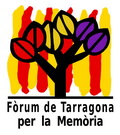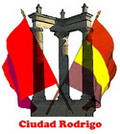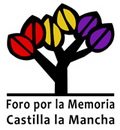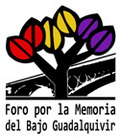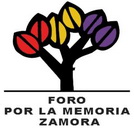Trial of judge Baltasar Garzón splits a Spain still suffering civil war wounds
 Nearly four decades after Franco’s death, Baltasar Garzón, the man who wants the regime’s crimes out in the open, is the only person in the dock
Nearly four decades after Franco’s death, Baltasar Garzón, the man who wants the regime’s crimes out in the open, is the only person in the dock
When Josefina Musulén took the stand inSpain’s supreme court last week it was, at last, a chance to tell her family’s tragic story to a panel of judges. Her pregnant grandmother, married to an anarchist, had been taken away by General Francisco Franco’s fascist-backed rebels during the civil war. Her family was informed she had been shot. «They were told a bullet had been fired into her pregnant belly,» she said.
It was only after Franco died in 1975 that fellow prisoners told them her grandmother had been kept alive until she gave birth to a baby girl. Josefina’s family has spent 33 years hunting for her. «We looked under every stone in Aragón,» she said.
Antonia Oliver, whose grandfather was one of tens of thousands killed and secretly buried by Francoist death squads, best expressed the wishes of those still seeking the graves of lost relatives. «My grandmother died and my mother is now 87,» she told the same seven judges. «All I want is to close her wounds with truth and justice.»
But that will not happen.Spain’s courts are not interested in these families, their pain or their thirst for justice. They are not interested at all, in fact, in the festering wounds left over by a civil war and four decades of dictatorship.
Musulén and Oliver would like to have been in court to accuse their grandparents’ killers. They were there instead to defend the only Spaniard to be tried because of Franco’s repression – the investigating magistrate and human rights crusader Baltasar Garzón. His decision to open a court investigation into 114,000 deaths enraged fellow judges, may cost him his job and revealsSpain’s inability to achieve closure for an uncomfortable, violent past.
It is the wound that refuses to heal. Too many died away from the front lines of the civil war and in the brutal, vindictive repression of the 1930s and 1940s. And too many people recall the casual, institutionalised repression that inspired the fear dictators need to stay in power. Where victims are no longer alive to raise their voices, children and grandchildren have done so instead.
Spainhas travelled light years since Franco died, ending 40 years of stultifying dictatorship. A tacit agreement to forget the past was, to begin with, maintained by a mixture of ingrained fear and determination to build a secure future. But that agreement is in tatters. And this one, unresolved matter casts a shadow over the country’s otherwise remarkable achievements.
Spanish courts, led by the indomitable Garzón, have pursued dictators, torturers and human rights abusers around the globe, pioneering a bold use of international law. They chase Nazi criminals, jail Argentinian torturers and even hadChile’s former dictator, Augusto Pinochet, arrested inLondon. Yet crimes committed on their own doorstep are untouchable.
Pedro Solsona, whose father was tortured and killed after agreeing to feed some anti-Franco guerrillas in 1947, recalls a Captain Lobo who spread fear through eastern Castellón in the 1940s. «He would beat shepherds and stop halfway to smoke a cigarette,» he told El País newspaper last week. «He wasn’t big or strong, just full of hate.»
One of the ironies of the Garzón case, in which a far-right group called Clean Hands accuses the magistrate of bypassing Spain’s 1977 amnesty law, is that people like this are finally being heard in court. In the upside-down world ofSpain’s relationship with its murderous past, then, it is the investigator who is accused of committing a crime. Men like Lobo have never been placed in the dock. «We victims did nothing to turn the spotlight on them afterwards.Spain’s reforms had absolved their masters. Would it have been right to pursue the servants?» the writer Manuel Vázquez Montalbán once explained, referring to 1970s police torturers inBarcelona.
Garzón’s failed attempt at opening a case against Franco and his henchmen nevertheless set out a devastating narrative for the 1936 rightwing military rebellion that sparked a civil war and toppled an elected government.
«The armed uprising of this date was planned and organised with the intention of bringing an end to Spain’s form of government [and] attacking, detaining or physically eliminating people who held positions of responsibility,» he wrote before the case was closed. Franco and his allies had carried out «the detention, torture, forced disappearance and physical elimination of thousands of people for political and ideological motives… a state of affairs that continued, to greater or lesser extent, after the civil war ended».
This simple exposition of history is outrageous to some – especially those who never had to answer for their role as Franco servants and, sometimes, to their descendants. A decade has gone by since the first bodies were pulled out of the ground as relatives summoned the courage to dig up the mass graves left by Franco’s death squads. The first exhumations were amateur affairs, involving guesswork, rumours and crude holes scooped out by borrowed yellow diggers. But they sparked something big. Ten years and 5,500 bodies later, they are sophisticated archaeological digs, with DNA testing and public funds to help.
In Poyales del Hoyo, a village in the centralprovinceofAvila, I attended the 2002 reburials of Pilar Espinosa, Virtudes de la Fuente and Valeriana Granada – whose roadside grave had been dug up in nearby Candeleda. It was a tense affair, with the rightwing mayor absenting herself for the day, but the bones were finally laid to rest in the village graveyard. «One lot finished and the next lot got started,» the mayor, Damiana González, later told me, referring to rightwingers from her own family killed by the left at the beginning of the civil war. As I dug deeper into the matter for a book, Ghosts of Spain, I found some people still lowered their voices when talking about those times.
Late last summer, I received a call from Candeleda. Virtudes’s relatives had asked to move her body to the family niche. A new rightwing mayor removed the bones of Pilar and Valeriana and threw them into the cemetery’s communal grave. I drove past the roadside monument erected on the site where they had been shot on a rainy December night in 1936. It had been defaced with graffiti. They include the Francoist slogan «Arriba España» and the yoke-and-arrows symbol of the far right Falange, whose members killed the women. A backlash had started.
Part of Pilar’s family had emigrated toBritain. One of her great-grandchildren, the translator Yash Gosain, has since moved back. He was furious when he discovered Pilar’s remains had been tossed into a mass grave and a protest was called. But the historical memory movement has attracted elements fromSpain’s hard left, whose vision of the past is black and white. «We are the grandchildren of the workers you could not kill» read a provocative banner. When Gosain tried to explain the reason for the protest, he was shouted down by the mayor’s supporters. Later he was attacked on the street.
Paul Preston of the London School of Economics, one of the great historians ofSpain, has added facts to the debate with his book The Spanish Holocaust, published next month.Prestonsees 200,000 people killed away from the battlefront, with Franco’s regime killing 20,000 more afterwards. «The collective violence in both rearguards by brutal perpetrators against undeserving victims justifies the use of the word ‘holocaust’,» he writes. «Its resonances of systematic murder should be invoked in the Spanish case, just as they are in those ofGermanyorRussia.»
When I went to see Clean Hands boss Miguel Bernad, a former parliamentary deputy for the neo-Francoist National Front, he said Garzón’s refusal to investigate the killing of several thousand pro-Franco prisoners at Paracuellos del Jarama, nearMadrid, proved his hatred of the right.
But an aching gap separates the victims of the «twoSpains», immortalised by poet Antonio Machado in his line to newborns: «May God protect you. One of the twoSpainswill freeze your heart.» The victims of leftwing excesses obtained justice from Franco’s regime – which happily sent those responsible to the firing squad. Franco’s victims have never had recourse to justice.
A new edition of Giles Tremlett’s Ghosts of Spain is published by Faber on 5 April.
GARZON’S SUCCESSES
¦ In the early 1990s, Garzón investigated death squads organised by the Socialist government in the 1980s to fight Basque separatists. Former interior minister José Barrionuevo was jailed for 10 years over his involvement, but later pardoned.
¦ In 1998, acting onSpain’s principle of universal jurisdiction, Garzón instigated the arrest of Augusto Pinochet, inLondon. The former Chilean dictator was held inLondonfor 18 months whileSpain’s extradition request was considered, but declared too frail to stand trial.
¦ In 2003, he produced an indictment calling for the arrest of suspected terrorists including Osama bin Laden. Eighteen people tried inMadridwere found guilty of being in al-Qaida.
¦ In2005, inthe first successful use ofSpain’s laws permitting prosecution for crimes committed in another country, he brought Argentinian ex-naval officer Adolfo Scilingo to trial for crimes against humanity. Scilingo was convicted and jailed for 640 years.
¦ In October 2008, he launched an inquiry into «crimes against humanity» committed during the Franco era. As part of the investigation Garzon ordered the excavation of mass graves. Under intense political pressure he withdrew the investigation and was charged with violatingSpain’s amnesty law.
http://www.guardian.co.uk/world/2012/feb/05/baltasar-garzon-trial-franco-crimes?newsfeed=true


